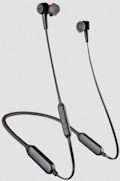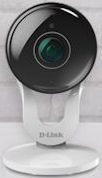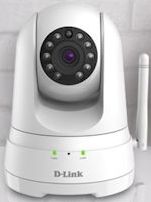Plantronics Bluetooth Headsets
Bluetooth wireless earbuds are the minimalistic approach to personal music, with just the two small earbuds (see previous post).
But the small size means tradeoffs, including shorter battery life. If you are looking for other alternatives, Plantronics offers a wide range of listening products, both single-ear earpieces used mostly for phone calls, and stereo headsets and earbuds in a variety of styles - in the ear, over the ear, over the head, and behind the head -- and for use in the office and for travel.
In particular, these Plantronics products are designed for extended music playback and can help you relax on long trips with extended listening times (8+ hours), voice assistant integration (Apple Siri or Hey Google), and built-in active noise-canceling (ANC).
ANC provides clearer audio in high- and low-noise environments, especially by filtering out low frequency noises like AC, fans, motors, and buzzing electronics. The noise-canceling level can be controlled from the Plantronics Backbeat app, along with selecting balanced or bright EQ modes.
 For longer use in earbuds, the Plantronics BackBeat GO 410 Earbuds add a flexible neckband that sits behind your head, with cables running up to the two earbuds.
For longer use in earbuds, the Plantronics BackBeat GO 410 Earbuds add a flexible neckband that sits behind your head, with cables running up to the two earbuds.
This design provides the space for extended use -- up to 8 hours listening with ANC, and 10 hours without ANC. And it allows the use of additional electronics, especially the active noise-canceling and voice assistant integration.
They also allow you to insert and remove the earbuds easily. When you remove them, they snap together magnetically to hang out of the way, which also turns off ANC and disconnects Bluetooth to save power. And unlatching them will automatically re-connect Bluetooth and answer an incoming call.
The power cable also is dual-use - the USB charging tip pops off to convert the cable into a standard 3.5 mm audio connector, so you can still use the earbuds with a wired connection even if the battery is dead.
The BackBeat GO 410 Earbuds are available for around $129, in black and white.
 Then, of course, the best way to isolate yourself on a long plane trip is to use over-the ear headphones, like the Plantronics BackBeat GO 810 Headphones.
Then, of course, the best way to isolate yourself on a long plane trip is to use over-the ear headphones, like the Plantronics BackBeat GO 810 Headphones.
These are designed for commuters and travelers, with up to 22 hours of listening time with ANC, and 28 without ANC.
They have a slim over-the-ear design with memory-foam padding, weigh only 7 ounces, and fold flat for travel.
The earpieces have room for multiple controls, including volume, skip tracks, and take calls, plus manual controls including select EQ presets, ANC on/off, and activate voice assistants.
The headphones support an extended range Bluetooth connection of up to a 164 feet with compatible devices. You also can connect to two devices simultaneously and stream from either one.
The Plantronics BackBeat GO 810 headphones are available for around $149, in blue, black, or white.
Either way, you can have comfortable extended listening, and still be able to move around without being tethered to your smartphone or tablet. The active noise-canceling is a nice bonus, and without the strong pressure you have felt with older products.
- See full Holiday Tech 2018 presentation for my local talks in the Princeton area
- See companion article in U.S. 1 Newspaper, Nov. 14, 2018
![]() Find the Plantronics BackBeat GO 410 Earbuds and
Find the Plantronics BackBeat GO 410 Earbuds and
BackBeat GO 810 Headphones on Amazon.com





 This second edition of the product includes two key features from pro drones: auto stabilization, so it can hover in place automatically without you needing to constantly tweak the controls, and auto tracking, so it can lock in on your face and keep you in the view even as you move.
This second edition of the product includes two key features from pro drones: auto stabilization, so it can hover in place automatically without you needing to constantly tweak the controls, and auto tracking, so it can lock in on your face and keep you in the view even as you move. The littleBits electronic building blocks, first released in 2014, allow kids to engage with electronic circuits by embedding a collection of electronic modules into "Bits" -- small circuit boards that simply snap together magnetically, so no icky wire wrapping or soldering is required.
The littleBits electronic building blocks, first released in 2014, allow kids to engage with electronic circuits by embedding a collection of electronic modules into "Bits" -- small circuit boards that simply snap together magnetically, so no icky wire wrapping or soldering is required.  The input bits include touch controls like buttons, switches, and sliders, sensors for light, motion, and sound, and sound generators like a keyboard and micro sequencer.
The input bits include touch controls like buttons, switches, and sliders, sensors for light, motion, and sound, and sound generators like a keyboard and micro sequencer.  Then the output bits display light like a bargraph or number, generate a sound with a buzzer or speaker, or can be in motion, from a fan to a DC motor.
Then the output bits display light like a bargraph or number, generate a sound with a buzzer or speaker, or can be in motion, from a fan to a DC motor. The new collection of Inventor Kits include the introductory Base Inventor Kit to build an intruder alarm or voice-activated robotic gripper arm ($99), the Electronic Music Inventor Kit to experiment with electronic instruments from a keyboard synth guitar to a hands-free air drum ($99), and the Space Rover Inventor Kit to customize a planetary rover ($199).
The new collection of Inventor Kits include the introductory Base Inventor Kit to build an intruder alarm or voice-activated robotic gripper arm ($99), the Electronic Music Inventor Kit to experiment with electronic instruments from a keyboard synth guitar to a hands-free air drum ($99), and the Space Rover Inventor Kit to customize a planetary rover ($199). 
 The next step is to add simple commands -- just by drawing patterns of colored dots (or using stickers) -- to have the Ozobot change speed, move in a direction, pause, count down until change, and perform pre-defined moves.
The next step is to add simple commands -- just by drawing patterns of colored dots (or using stickers) -- to have the Ozobot change speed, move in a direction, pause, count down until change, and perform pre-defined moves.  All this physical fun can then transition into programming using the OzoBlockly programming tool, which also runs in the browser.
All this physical fun can then transition into programming using the OzoBlockly programming tool, which also runs in the browser.  The new
The new